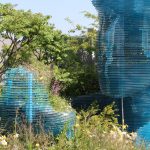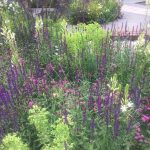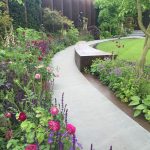Like my 15 Sensational Plantings to Recreate from Chelsea article last year I’m hoping to breakdown the myth that you can’t recreate the Chelsea look. Of course you can! Right plant, right place and they look after themselves. It’s good to discuss this because does anyone really go to the Chelsea Flower Show and not appreciate this is a snapshot of perfection? I don’t think so. Anyone can take inspiration and recreate the colourful, lush and exciting gardens with a little thought and planning. Without further ado, in we go…
1) Shimmer me timbers
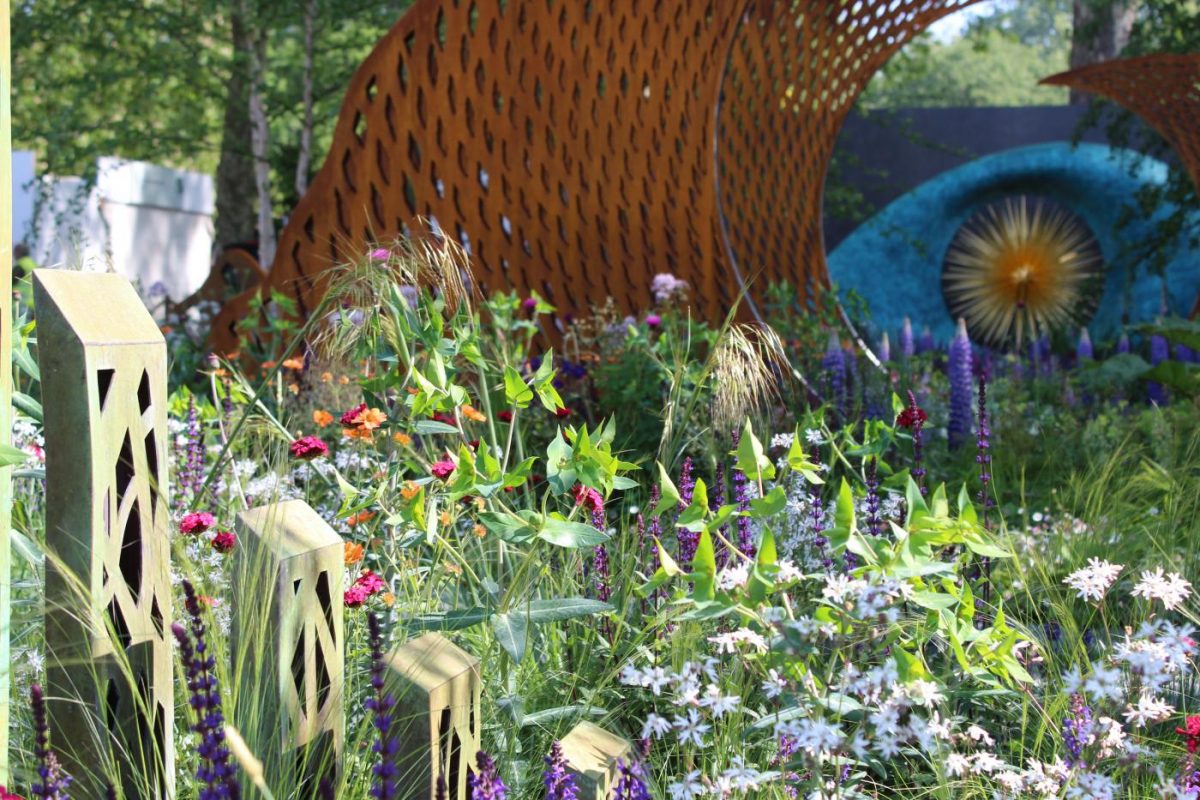
Dark purple Salvia caradonna, lime green Euphorbia lathyris, soft orange Geum ‘Mai Tai’, crimson Cirsium rivulare ‘Atropurpureum’ were among some of the most used flowers in Nic Howard’s David Harbour and Savills garden. Planted alongside grasses Nassella tenuissima and Stipa gigantea to create a complex, fluffy look. One of my favourite plantings at the show and one that anyone can easily recreate, in any standard soil. Unlike lots of Chelsea displays, this will go on flowering all summer with some careful deadheading.
2) Woodland wondromeda
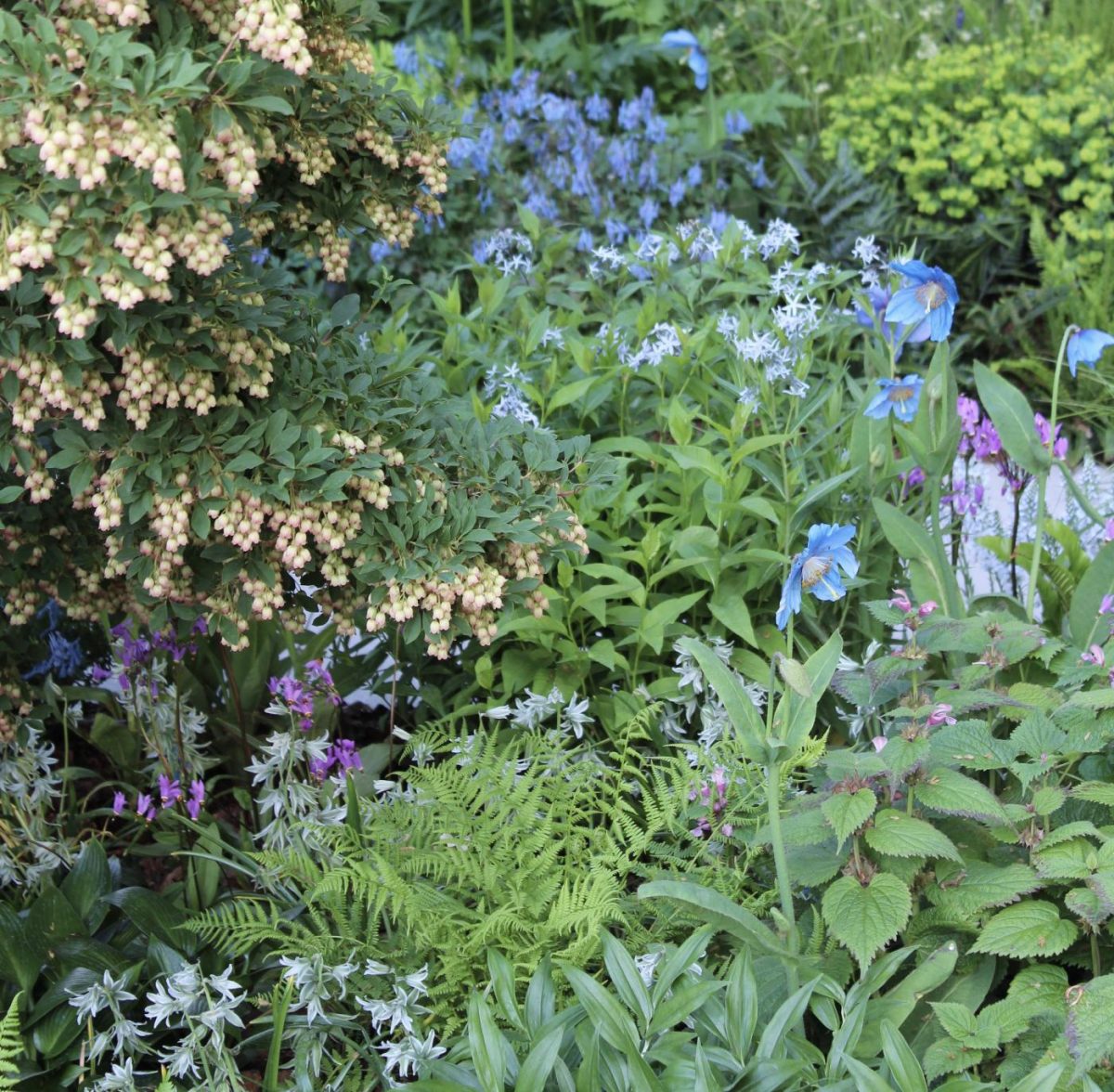
Chris Beardshaw’s ‘Best In Show’ garden is incredibly sophisticated. I’ve been a big fan of Chris’ plantsmanship and choices of plants for years – I watch Beechgrove Garden avidly for his segments. His shady woodland planting is very subtle but pause to look closely and it’s unquestionably clever and elaborate. In a shady damp spot, recreate the small planting above with Luzula nivea, Athyrium filix-femina, Lamium orvala (the pinky nettle like plant on the right) and Epimedium x rubrum. The unusual glowing blue comes from Corydalis flexuosa ‘China Blue’ which is fine to grow and then for the more adventurous, the trickier Meconopsis, Himilayan poppy. The shrub on the left, which I’d not seen before, is Enkianthus campanulus.
3) Glowing hues
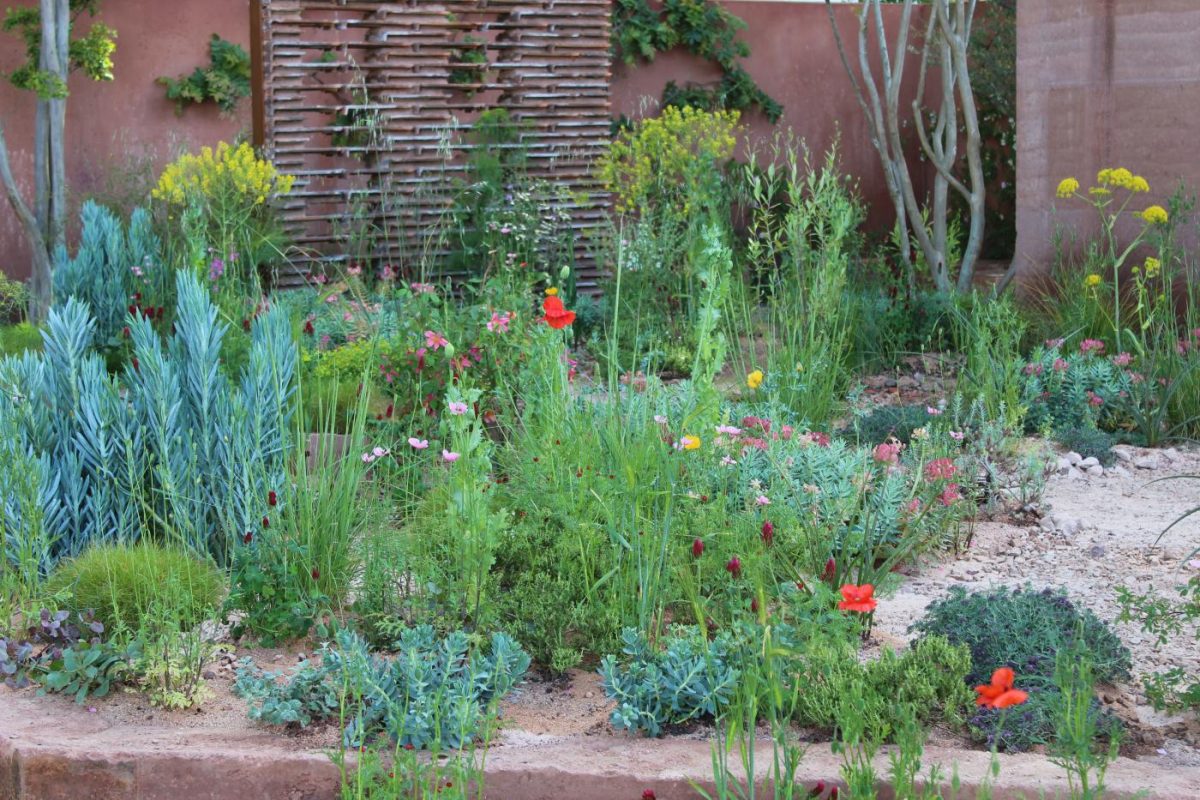
The terracotta backdrop of Sarah Price’s amazing garden set off all these beautiful colours, so if you have a similarly coloured patio or gravel area – this is for you. I have to admit, this garden contains such a mind-boggling number of plants it’s hard to work out exactly which is which without revisiting the garden in person to look more closely. However, giant fennel is one of the tall yellow stars of the garden, Ferula communis subsp. glauca. Common poppy, Papaver rhoes are the reds above. The glaucous, glowing blue plants are Senecio mandraliscae (tall) and Euphorbia cyparissias, E. pithyusa (low) as well as Sedum sediform. All of which are great for dry soils, such as in gravel gardens.
4) Beth’s poppy
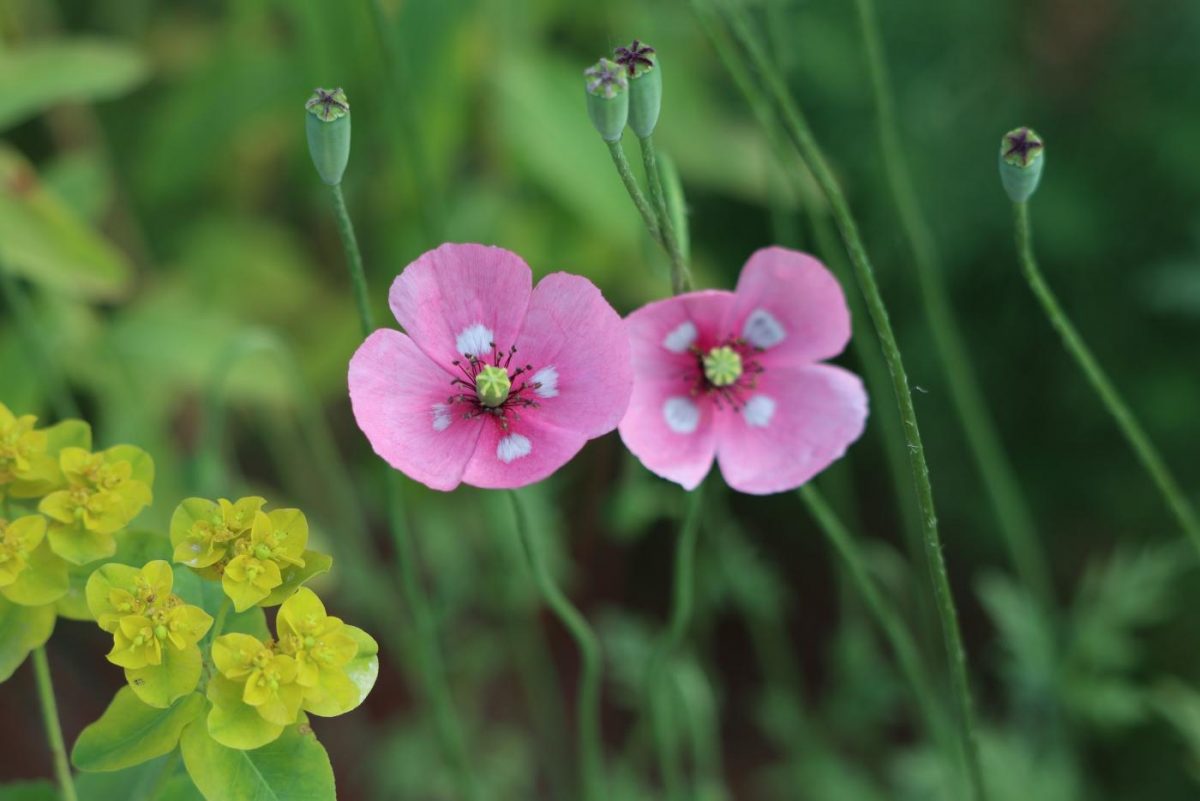
I first saw Papaver dubium ssp. lecoqii var. albiflorum in James Basson’s Chelsea garden in 2017. I’ve since introduced it to our garden from seed bought at Great Dixter. This year, it was growing in many different Chelsea gardens as if it had self seeded around the whole grounds. A wonderful tribute to the late Beth Chatto. Easy to grow, just chuck some seeds around for a low growing pop of pink.
5) Peas in a pod
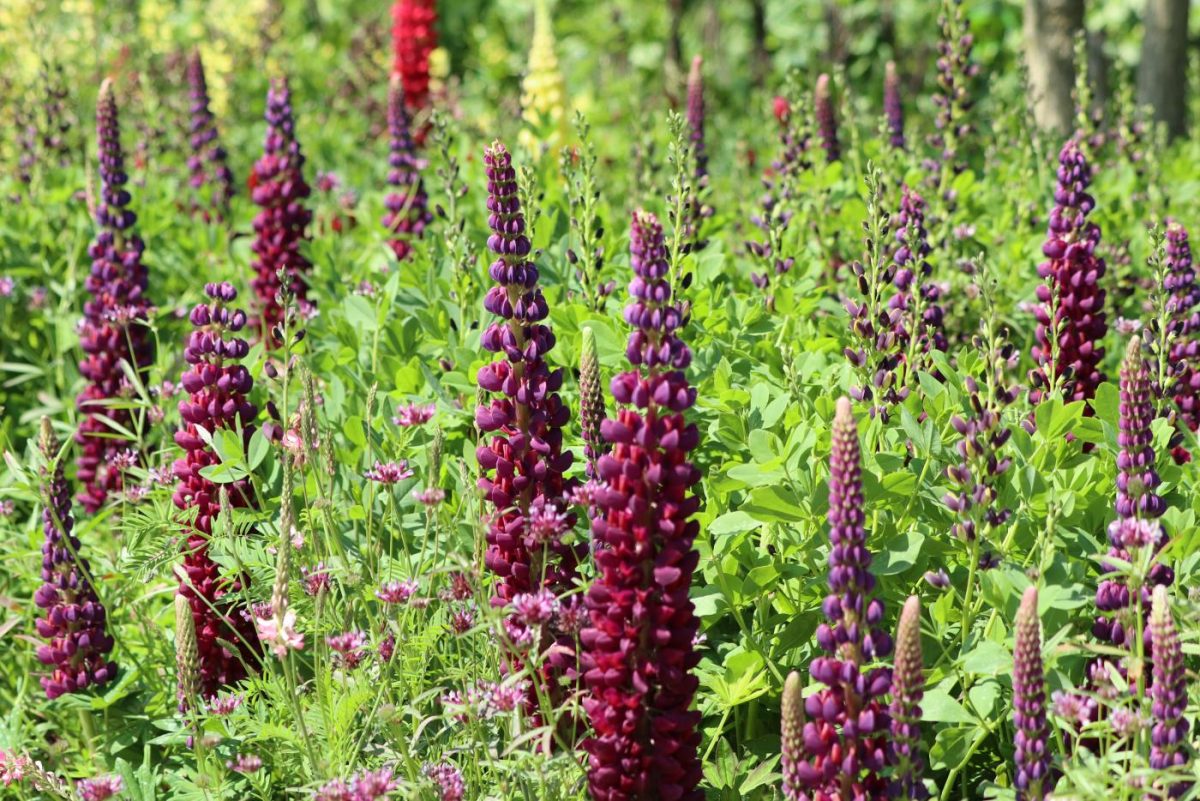
Catherine MacDonald’s Seedslip garden has the wonderful concept of only growing plants in the pea family, Fabaceae. There’s barely a plant in this family which I don’t like the flowers of and they’re generally quite easy to grow, so go wild. Here Lupin ‘Masterpiece’ and a dark purple Baptisia – a plant I don’t often see – are growing on mass alongside normal garden peas and sweet peas.
6) Healthy Hansel and Gretel
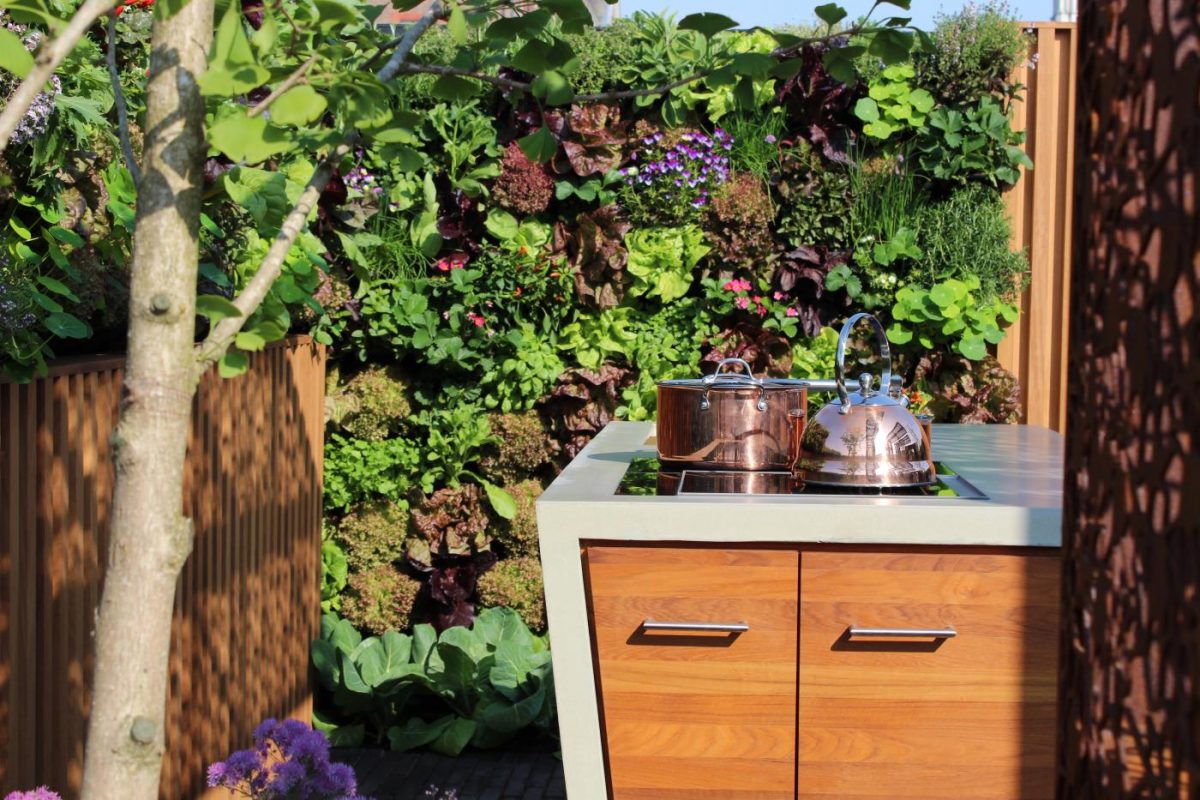
I was really taken with this clever edible wall of salad crops around an outdoor kitchen by designer Tony Woods. To recreate it, you will need either a living wall system (best option for built in irrigation) or hanging planting pockets from Amazon. Then a range of leafy crops like cut-and-come-again lettuce, nasturtium, chives, dwarf kale and edible viola flowers. All easy to grow as long as they are well watered – though you’ll have to practice some nifty swapping out when you’ve eaten too many!
7) Purple fest
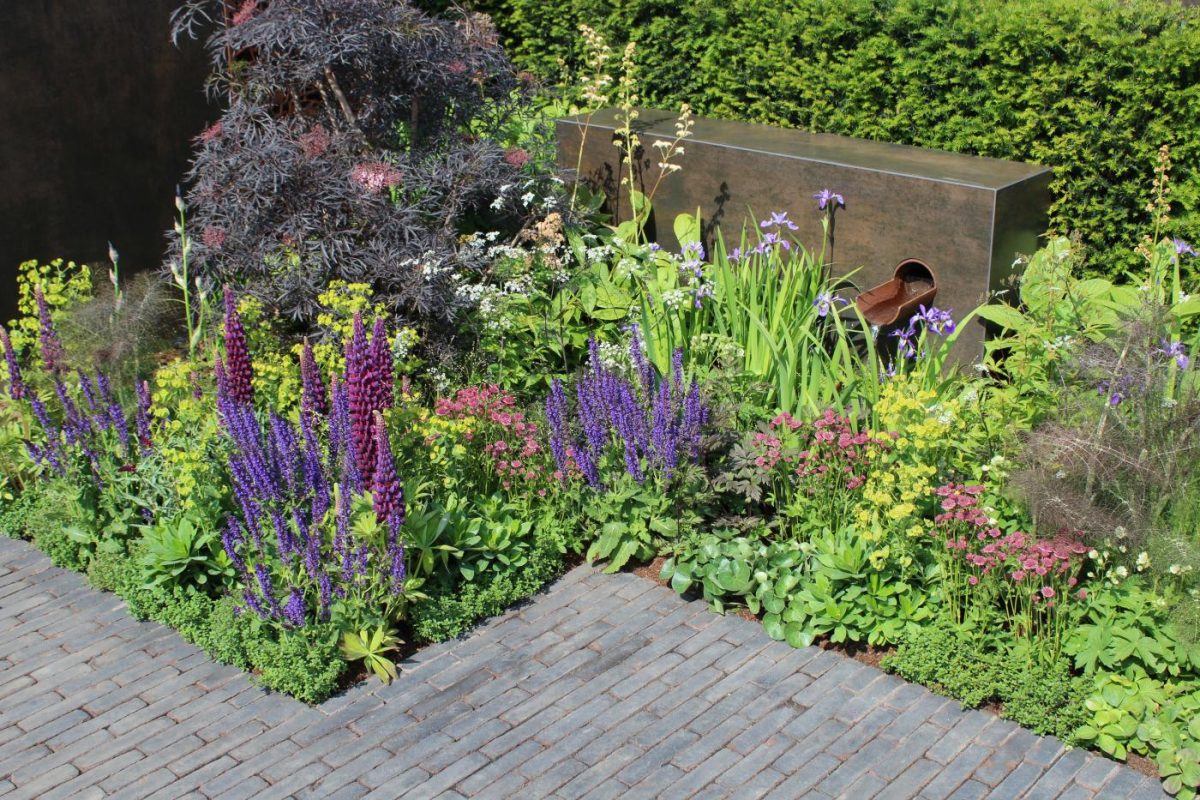
Woods’ garden has a strong purple and bronze colour theme. I grow many of the above plants very easily in my own garden so anyone else can too. Bronze fennel, Sambucus nigra f. porphyrophylla ‘Black Lace’, Salvia caradonna, Lupin ‘Masterpiece’, light blue Iris, Euphorbia and Astrantia grow happily together.
8) Country garden froth
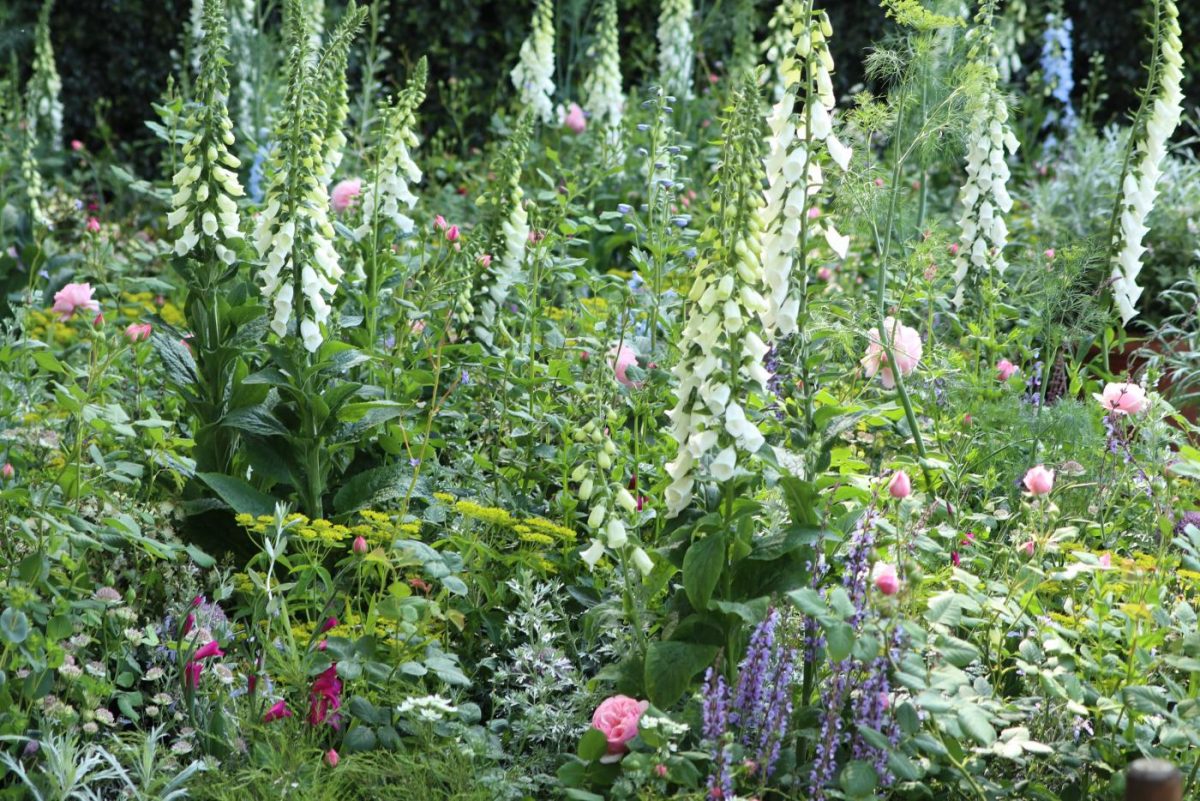
The fynbos wild side of Jonathan Snow’s South African garden contains some easy to grow garden plants like Kniphofia and Leonotis but also some not practical for us everyday gardeners, like the Proteas. However, in the garden side it’s full on cottage style with white foxgloves, pink roses, pink-white Astrantia, light blue Salvias and Euphorbia. Also seen in the Welcome To Yorkshire garden. Easy.
9) Space invaders
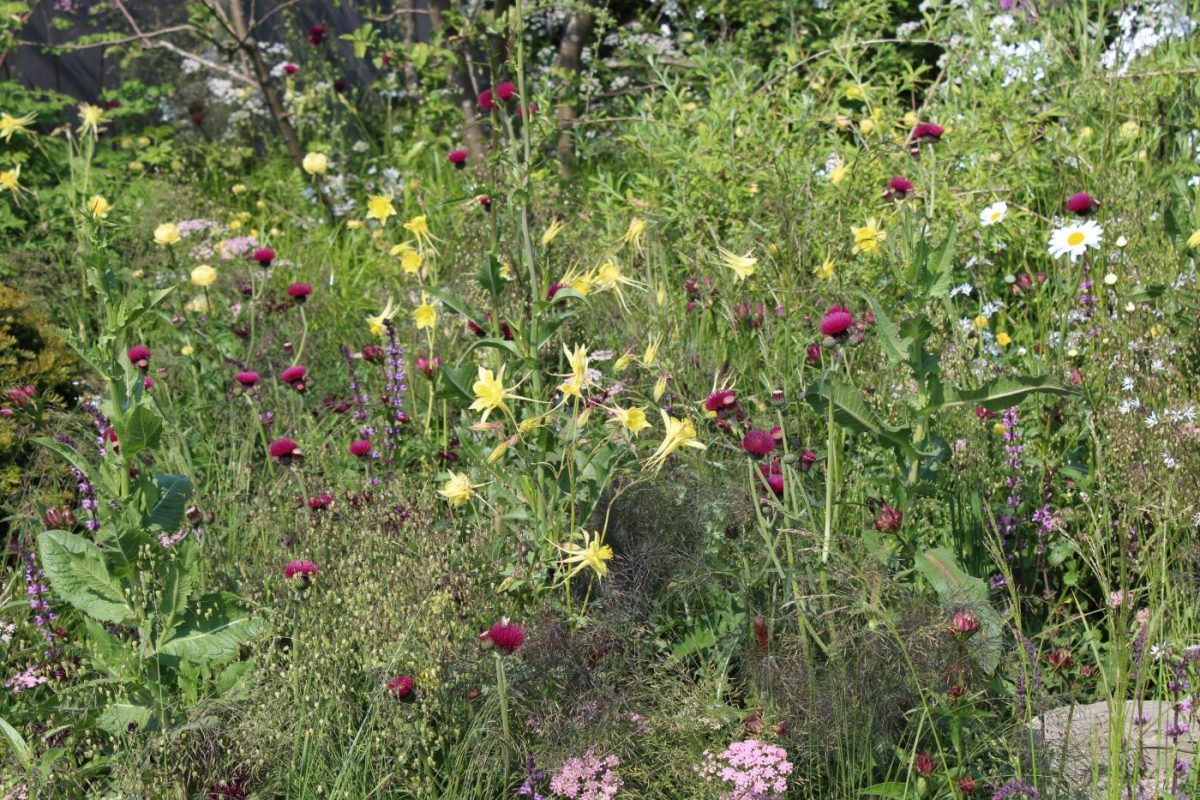
To focus on two plants here, the yellow spaceship like Aquilegia longissima is a favourite of mine, its flowers flying through the mists of bronze fennel and Briza media grasses. It looks like it’s engaged in a space battle with the crimson flowers of Cirsium rivulare ‘Trevor’s Blue Wonder’.
10) Totally tropical
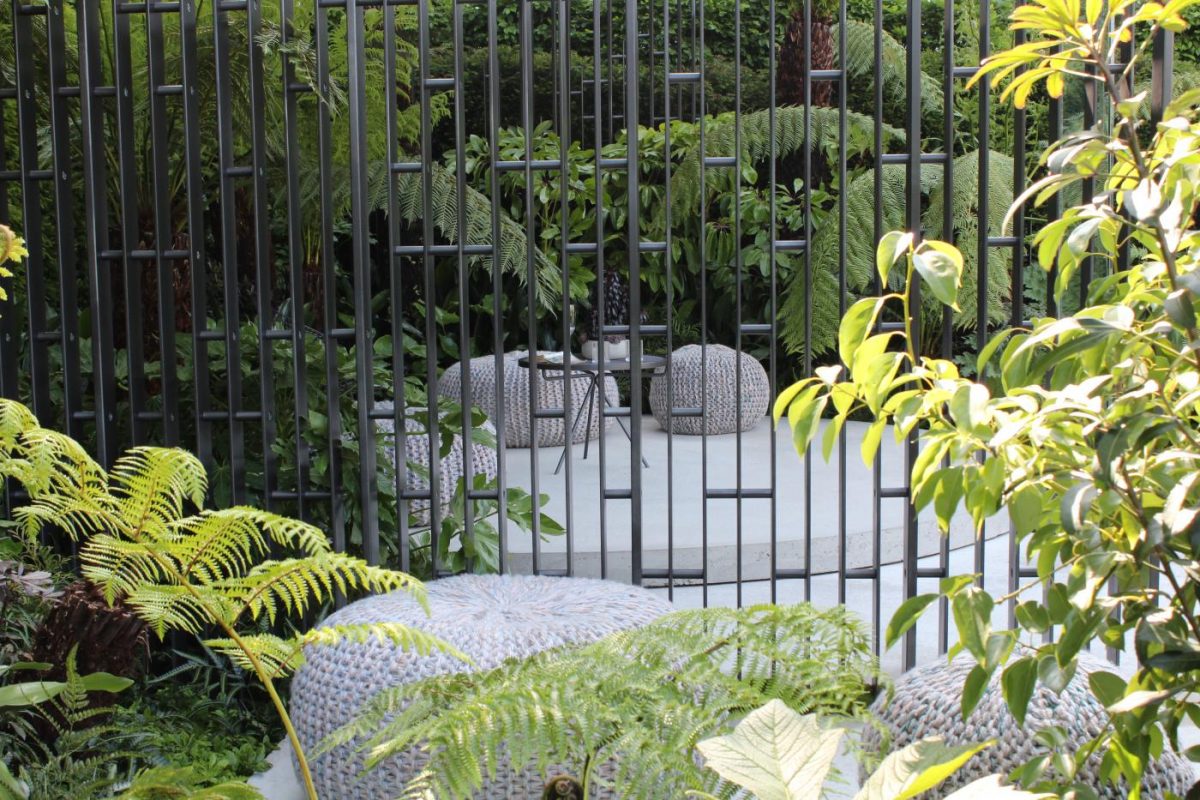
When I learnt that Stuart Charles’ Spirit of Cornwall garden was meant to have towering Echium pininana and large leaved Tetrapanax rex the whole thing made more sense and I loved it even more. Anyone who lives in a mild climate can easily recreate this planting. Dicksonia antarctica tree ferns, Fatsia japonica, Cordyline australis, Aspidistra elatior and lots of smaller ferns. All of these are easy to grow with little frost or frost protection.
11) Tranquility
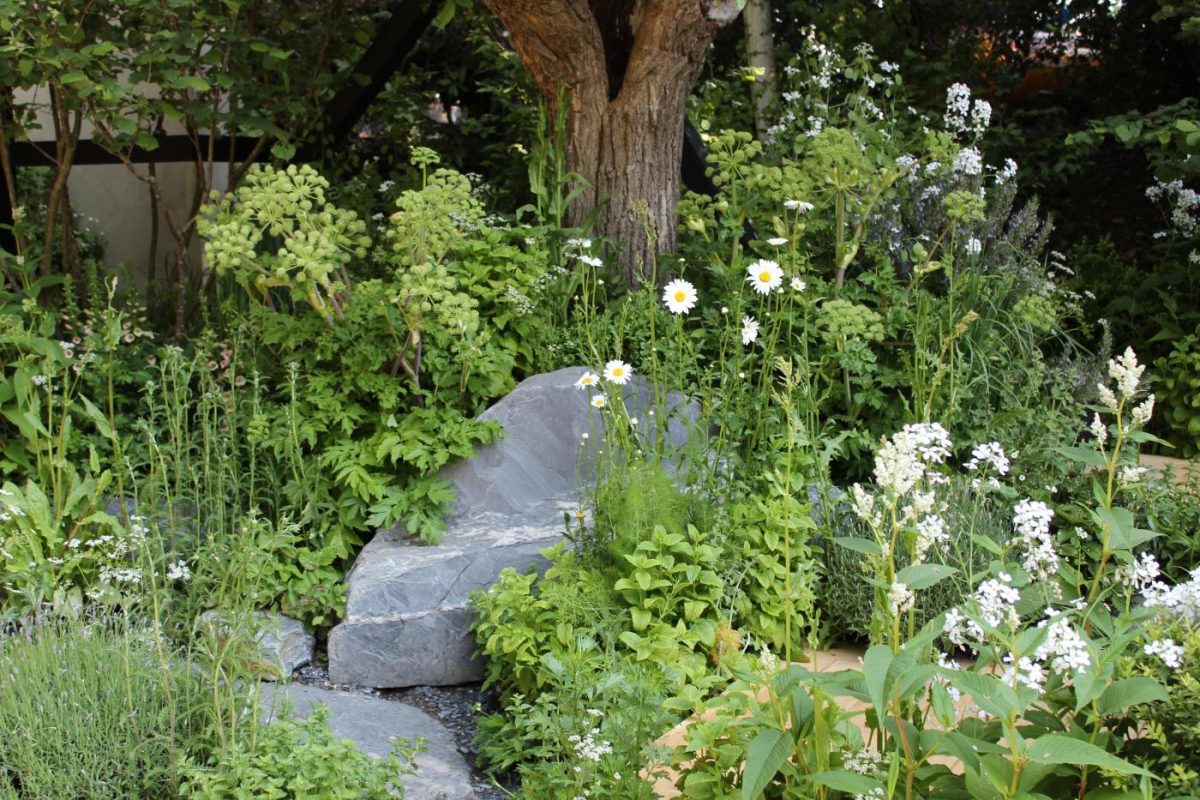
Angelica archangelica, Persicaria polymorpha, Hosta ‘Francee’, ferns, Calamagrostis brachytrica and others mix in a semi-shady space. Paul Hervey-Brookes has created relaxing calm we can all copy at home.

